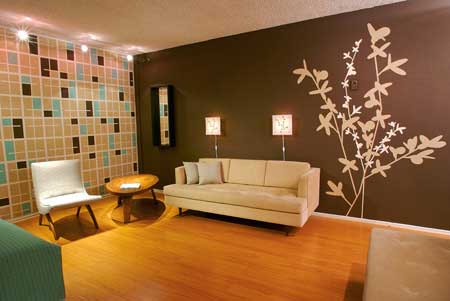Open space
Wanting to have a nice and comfortable home to return to is nice. But sometimes we want more then that. More luxury and class. Big spaces are frequently associated with luxury in interior design. But unfortunately everybody can not afford having lots of space and therefore needs to settle with a smaller and narrower place. There is remedy though, as impossible as it sounds, we can create space.
Basics
Get rid of all the things you do not need nor like. Of course it can be neat to keep a broken vase, because your grandmother bought it when you turned twenty-five, but if it only lies around and occupies valuable space, get rid of it. Less is more, space.









Listen to the ancient Chinese philosophy, Feng shui, and get rid of all clutter to achieve a more balanced environment, which is necessary in a smaller interior. Try to keep everything as organized as possible and you will see how much more floor space that will be exposed, hence make your room appear as if it is larger.
Color and Light
In small homes lighting is crucial. Natural sunlight makes a home feel more alive and therefore is, of course a must. So if you want to take as much advantage of this source of light, then say "bye bye" to thick and dark curtains that absorbs light. Instead use sheer curtains, for instance linen.
Another way of using the natural light to the fullest is by hanging up mirrors that reflects the light to other parts of the room. Also glass will contribute with reflection. Glass also helps make an interior appear bigger since it's a see-through material. So the trick here is to us furniture made of glass, like for example a glass table, this won't seem as if it is occupying much space.
Artificial lighting can be as important as natural light. Since natural light is not available around the clock, depending on season and location, we need to avoid a single unit for light. Like a big lamp in the middle of the ceiling and nothing else. When light comes from the ceiling down, the walls seems as if they are getting closer to the middle, and you obviously don't want that, as it makes the room seem narrower. So if you do it the other way around and have spotlights or up lights from the floor towards the ceiling the walls will appear as if they are more far off from each other, the result is more perceived space.
Try to divide the lamps to different areas of the room; this donates the room more shapes. Use accent lighting to highlight arts and plants, and have task lighting, which is the lighting that helps you read, cook and so on.
Colors in small spaces are also significant since it works with light. So utilize light colors, mainly neutrals. These colors are good for small spaces because they do not absorb light, which darker hues do.



0 comments:
Post a Comment